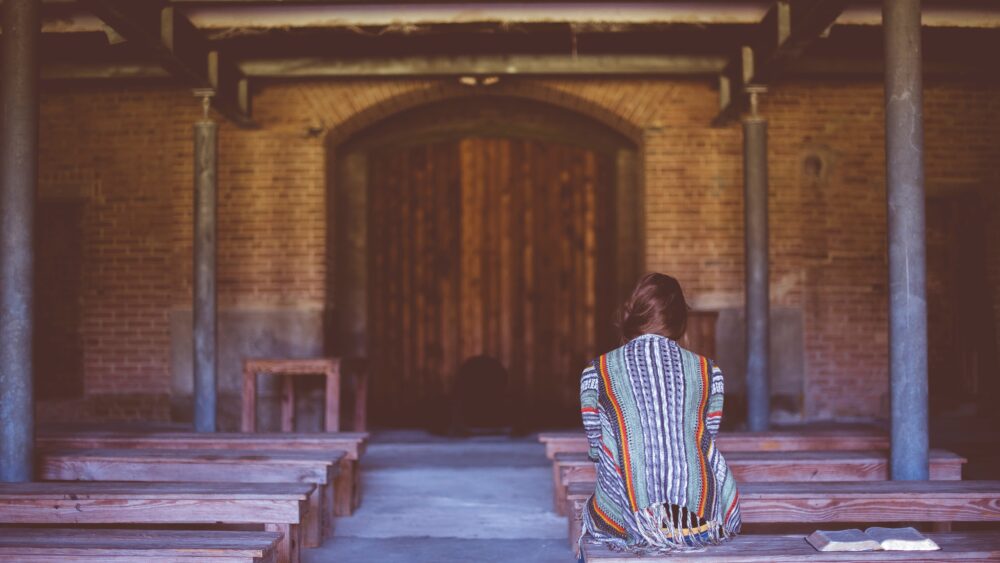Some small churches are meeting together again – but it ain't easy
Don’t expect church to look the same anytime soon
After weeks apart, churches were allowed to meet in person last weekend for the first time under the Federal Government’s three-step plan to ease COVID-19 restrictions.
While this might have sounded like news which churches were waiting to hear, the practicalities of social distancing – along with state government limits on gatherings – made it harder to digest.
Most states have permitted religious gatherings of up to ten people under Step One of the government’s framework, with Western Australia and Tasmania permitting up to 20. However, numbers are subject to physical distancing measures, as well as public health advice.
“We decided to have three gatherings … which would allow time for wiping down seats [and] door handles.” – Robyn Painter
Eternity asked three smaller churches – with congregation numbers which fall close to government-defined limits – how they responded to the news.
Robyn Painter, pastor at Peterborough Community Church in mid-north South Australia, says they were eager to jump in, but the question was how.
“We didn’t want 20 people turning up at the same time. So, we asked people to make a booking,” explained Painter.
“We decided to have three gatherings – at 9am, 10am and 11am. Each would last 55 minutes, which would allow time for wiping down seats [and] door handles.”
As well as having to record contact details of each attendee, Painter outlines other considerations which had to be made.
“Chairs were placed in a very well-spaced semi-circle. Hand sanitiser was placed at both doors.”
“Single use coffee cups were put out, with commercial, single-serve packaged biscuits.
“Nobody handled anyone else’s food … Kettles and tea and coffee [were placed] in the kitchen, which has proper handwashing facilities and disposable gloves.”
“It was a strange and wonderful feeling to gather again” – Luke Isham
Luke Isham, pastor of St Kilda Balaclava Presbyterian Church in Melbourne, says morning tea was absent from his church service altogether.
“[It] felt odd … [but] I think we’ll figure out a way to do it safely in the future,” Isham told Eternity.
Isham’s church met for the first time on Sunday, holding two in-person services – one with ten people and one with seven – alongside their online YouTube service.
“It was a strange and wonderful feeling to gather again – a little frustrating that we still couldn’t shake hands, but people lingered for a long time … swapping quarantine stories.”
Although some small churches gathered over the weekend, others decided against it.
“We certainly don’t want to stand at the door and send people away.” – Lyndon Rumsey
Lyndon Rumsey, pastor at Warragamba Baptist Church on the edge of NSW’s Blue Mountains, decided not to hold services because of the ten-person rule.
“We certainly don’t want to stand at the door and send people away,” he said.
With a congregation made up of mostly elderly, Rumsey said multiple services may be too difficult to organise.
“We have very few resources, [and] it would probably confuse some of our mostly older people.”
Over the COVID-19 period, the church has been gathering via regular Zoom meetings and phone calls. Weekly sermons have been accessible on YouTube or, for some members, in written form, which is dropped off at homes by Rumsey and his wife.
A prayer chain has also been set up to send out regular texts to congregation members asking for prayer requests.
“We also buy lunch most weeks to support the local café and continue to support and build relationship with them … [It’s] our desire to connect and impact our community.”
Moving forward, Warragamba Baptist will continue to operate the same way. However, most likely with a bit more contact.
“We have invited a family to come over to our place for lunch … [and] we will probably start asking people to join us [at the local café],” says Rumsey.
Stead estimates that for most churches, only 22 per cent of current maximum capacity may be filled.
The challenges faced by these smaller churches could, in some respects, help pave the way for larger churches to begin meeting in-person again.
Parts of the Federal Government’s framework allow for larger religious gatherings, with Step Two allowing for gatherings of up to 50, and Step Three up to 100.
However, with physical distancing measures still set to be in place, church will not look the way it used to for some time.
Michael Stead, Anglican Bishop of South Sydney, has put together a paper outlining what churches will look like with gatherings limited to 100 people.
With individuals requiring a space of four square metres each – as well as 1.5 metres between people – most churches are unlikely to have enough space to fit 100 church members.
Stead estimates that for most churches, only 22 per cent of current maximum capacity may be filled.
However, if the four square metre rule was removed, and only the 1.5 metre rule maintained, Stead suggests a way to double the capacity of our churches – which involves allocating everyone a hexagonal-shaped space, with 90cm long sides.
This lay-out suggestion exclude pews, which, according to Stead, significantly impede maximal capacity.
Nonetheless, Stead’s paper offers a practical approach to the national framework and fleshes out how larger churches could possibly accomodate – at least some of – their congregation during the coming months.
Email This Story
Why not send this to a friend?

